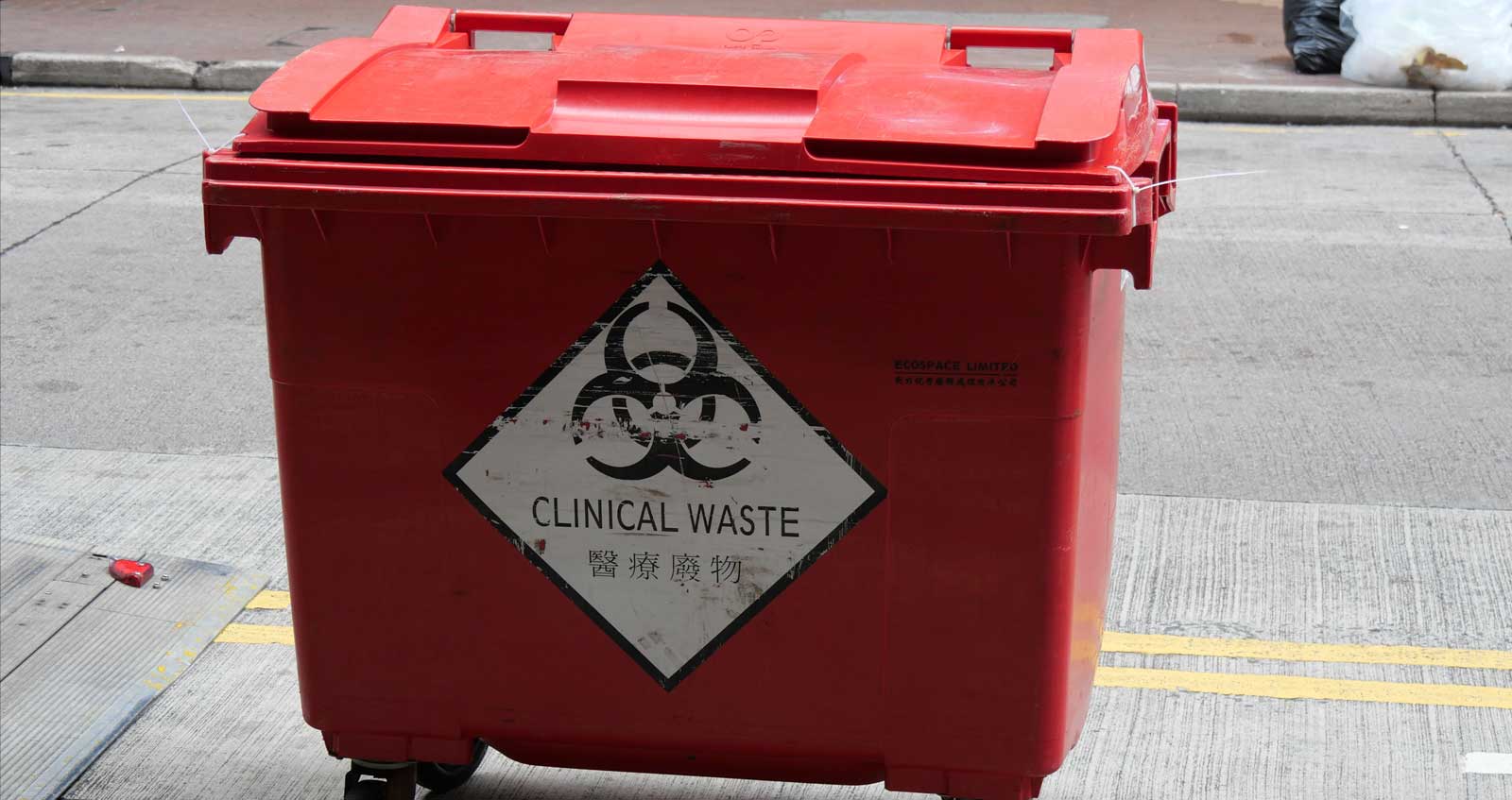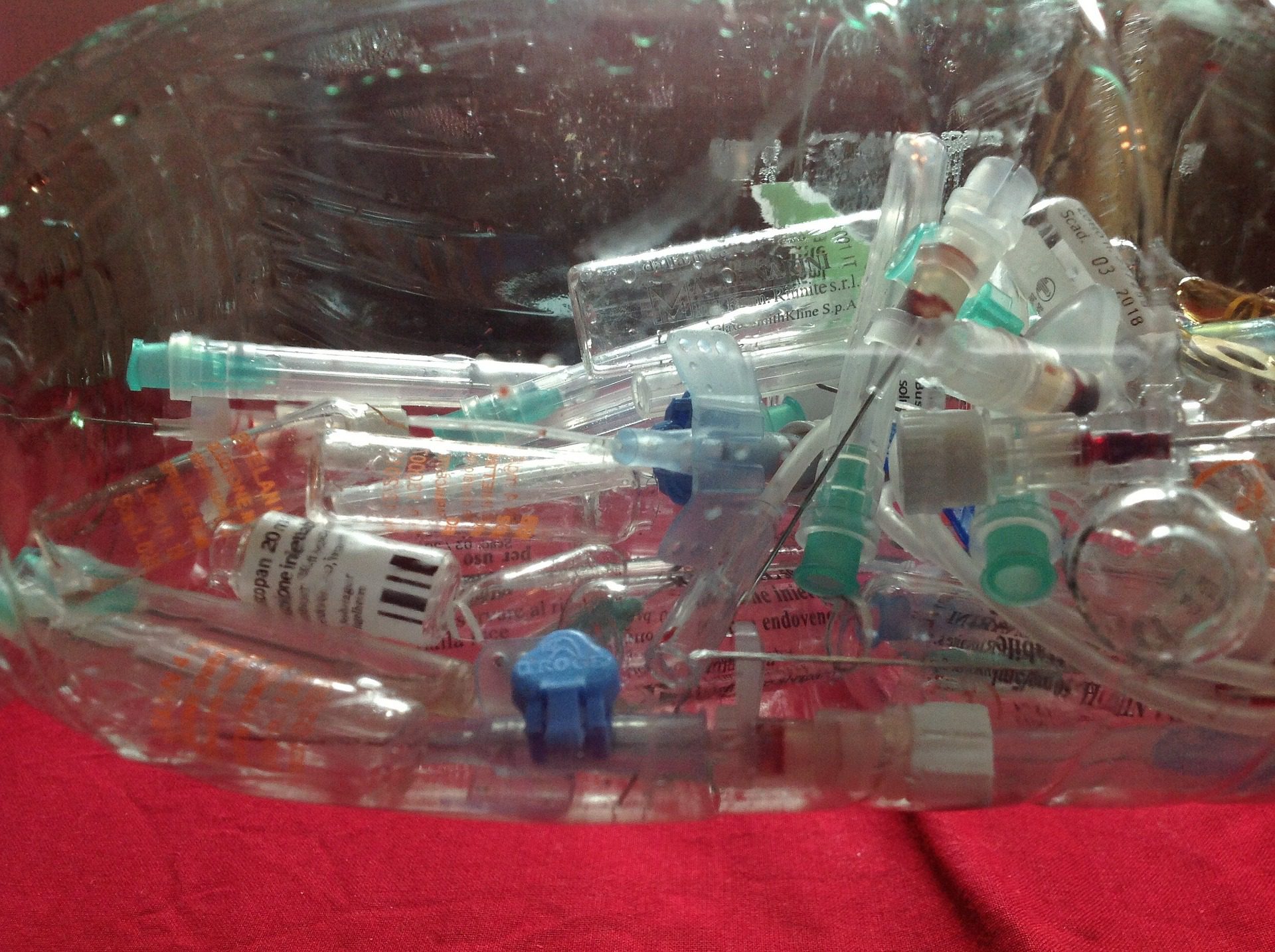Guardians of Cleanliness: Citizen Medical Waste Removal Service for Your Satisfaction
Guardians of Cleanliness: Citizen Medical Waste Removal Service for Your Satisfaction
Blog Article
Minimize Prices and Make Best Use Of Safety And Security: Effective Medical Garbage Disposal Methods
Efficient medical waste disposal methods are essential for medical care centers to decrease prices and maximize safety and security. With the expanding issue for environmental sustainability and the increasing number of regulations bordering waste monitoring, it is necessary for healthcare companies to take on effective and compliant methods. By carrying out proper partition and categorization, reliable product packaging and labeling, secure transportation and handling, efficient treatment and disposal techniques, and compliance with regulative guidelines, health care facilities can ensure the secure and responsible administration of clinical waste. In this discussion, we will check out each of these techniques in detail, giving insights and useful pointers for healthcare specialists to enhance their garbage disposal procedures.

Proper Segregation and Categorization
Proper segregation and classification are important elements of efficient clinical waste disposal strategies, making sure the safety of medical care employees, the general public, and the setting - medical waste removal near me. medical waste disposal services with WasteX. By dividing various kinds of clinical waste at the point of generation, medical care facilities can lessen the risk of cross-contamination and prospective injury to people and communities
Among the key consider correct partition is the identification and category of medical waste. This entails classifying waste right into various groups, such as transmittable, harmful, radioactive, or pharmaceutical waste. Each group needs particular handling, storage, and disposal techniques to avoid any type of adverse impacts on human wellness and the atmosphere.
Furthermore, appropriate segregation additionally consists of the use of color-coded labels and containers to plainly recognize and distinguish the different sorts of medical waste. This assists health care employees and waste monitoring employees to conveniently recognize and deal with the waste appropriately. Red containers might be made use of for contagious waste, while yellow containers might be assigned for hazardous waste.
In enhancement to segregation, appropriate classification also includes the correct product packaging and containment of medical waste. This guarantees that waste is firmly saved and transferred without posing any risks to individuals or the setting. Utilizing watertight and puncture-resistant containers, as well as correctly sealing and identifying them, helps to avoid any unexpected direct exposure or release of harmful compounds.
Reliable Packaging and Classifying
Efficient product packaging and labeling play an important role in making certain the safe and efficient disposal of clinical waste. Appropriate packaging is important to protect against leakage, breakage, or spillage throughout transport and handling. It helps to lessen the threat of contamination and safeguards health care employees, waste administration personnel, and the atmosphere from potential risks.
Clinical waste needs to be packaged in sturdy and watertight containers that are resistant to penetrate and damage. These containers ought to be appropriately sealed to avoid any type of leak. Additionally, the packaging needs to be able to withstand the conditions of transport, consisting of temperature variants and misuse.
Identifying is equally vital as it gives critical info regarding the materials of the waste and any kind of possible hazards associated with it. The labels should consist of the name of the healthcare center, the type of waste, and any kind of special handling guidelines. Standard and clear labeling guarantees that waste administration workers can quickly determine and handle the waste appropriately.
Effective product packaging and labeling also help in the appropriate segregation and categorization of clinical waste. Clear labeling enables easy identification of various waste streams, such as transmittable waste, sharps, or pharmaceutical waste. This assists in streamlining the disposal procedure and making sure that the waste is dealt with or thrown away according to regulatory guidelines.
Safe Transportation and Handling
Guaranteeing the safe transportation and handling of clinical waste is of utmost importance in order to protect against click here to find out more any potential health and wellness and ecological dangers. Clinical waste, such as sharps, contaminated materials, and pharmaceutical waste, should be properly packaged and dealt with to minimize the threat of exposure to dangerous materials and virus.
Moving clinical waste calls for conformity with rigorous regulations and guidelines set by neighborhood authorities and ecological agencies. These guidelines intend to safeguard the health and wellness of workers involved in waste management and prevent the launch of dangerous products right into the atmosphere.
To ensure risk-free transport, clinical waste must be placed in puncture-resistant and leak-proof containers that are properly secured and classified. These containers ought to be secured in a manner that prevents spills or damage throughout transit (medical waste removal near me). Additionally, it is vital to use specific cars geared up with ideal safety features to move medical waste. These vehicles must have appropriate air flow and be designed to stop leak or contamination.
Taking care of clinical waste likewise calls for appropriate training and adherence to safety and security protocols. Employees associated with the handling of clinical waste ought to wear appropriate personal safety tools (PPE) such as handwear covers, masks, and dress to reduce the danger of exposure. They must additionally comply with strict hygiene techniques to stop the spread of infections and guarantee the secure disposal of waste.
Effective Treatment and Disposal Approaches
Carrying out proper treatment and disposal approaches is important in managing medical waste effectively and lessening possible health and wellness and ecological dangers. Medical waste, that includes sharps, transmittable materials, chemicals, and pharmaceuticals, can present significant dangers otherwise managed and disposed of properly. There are a number of treatment and disposal approaches offered that adhere to governing guidelines and promote risk-free techniques.
One usual technique is incineration, which includes shedding the waste at heats. Incineration works in ruining microorganisms and lowering the quantity of waste, but it can release hazardous pollutants right into the air if not appropriately controlled. It is essential to use modern incinerators outfitted with exhaust control innovations.
An additional method is autoclaving, which utilizes heavy steam and pressure to sterilize the waste. Autoclaving is reliable in eliminating virus and decreasing the volume of waste, but it requires cautious monitoring and upkeep to make sure proper functioning. The decontaminated waste can then be securely thrown away basics in a landfill.
Chemical therapy is one more alternative, which entails using disinfectants or other chemicals to reduce the effects of microorganisms. This approach is commonly utilized for liquid waste, such as lab specimens. Nevertheless, it is necessary to make use of suitable chemicals and adhere to proper procedures to make sure efficient therapy and avoid ecological contamination.

Conformity With Regulatory Guidelines
Adhering to regulatory guidelines is crucial in making certain appropriate conformity with clinical waste disposal methods. These standards are implemented to protect public health, protect against ecological contamination, and maintain workplace security. Conformity with regulatory guidelines is essential for medical care facilities, as non-compliance can result in penalties, fines, and reputational damages.
Regulatory guidelines lay out the appropriate handling, storage space, transportation, and disposal of medical waste. They provide details instructions on packaging needs, labeling, and record-keeping. These standards additionally address the partition of different waste streams, such as sharps, transmittable waste, and pharmaceutical waste. Medical care centers must make certain that their waste administration practices line up with these guidelines to lessen the threat of exposure to dangerous products and avoid the spread of check my blog infections.
To keep conformity, healthcare centers ought to establish thorough waste monitoring programs that include personnel training, regular audits, and ongoing monitoring. It is necessary to maintain updated with any adjustments or updates to governing standards, as techniques might progress with time. By staying educated and implementing correct methods, healthcare centers can reduce the potential for governing infractions and shield the health and wellness of their personnel, patients, and the bordering community.
Conclusion
Finally, implementing efficient medical garbage disposal strategies is vital for making best use of and minimizing prices security. Proper segregation and categorization, effective product packaging and labeling, risk-free transportation and handling, and effective therapy and disposal techniques are necessary steps to guarantee conformity with regulatory guidelines. medical waste removal near me. By sticking to these methods, health care centers can safeguard the setting and public health while additionally decreasing financial concerns linked with medical waste administration
By applying correct segregation and categorization, effective packaging and labeling, safe transportation and handling, reliable therapy and disposal techniques, and conformity with regulative guidelines, medical care facilities can guarantee the responsible and risk-free monitoring of clinical waste. Red containers may be made use of for infectious waste, while yellow containers might be designated for harmful waste.
Clear and standard labeling ensures that waste administration personnel can conveniently identify and take care of the waste appropriately. (medical waste disposal services with WasteX)
Clear labeling permits for easy identification of various waste streams, such as transmittable waste, sharps, or pharmaceutical waste. These guidelines likewise address the partition of different waste streams, such as sharps, contagious waste, and pharmaceutical waste.
Report this page